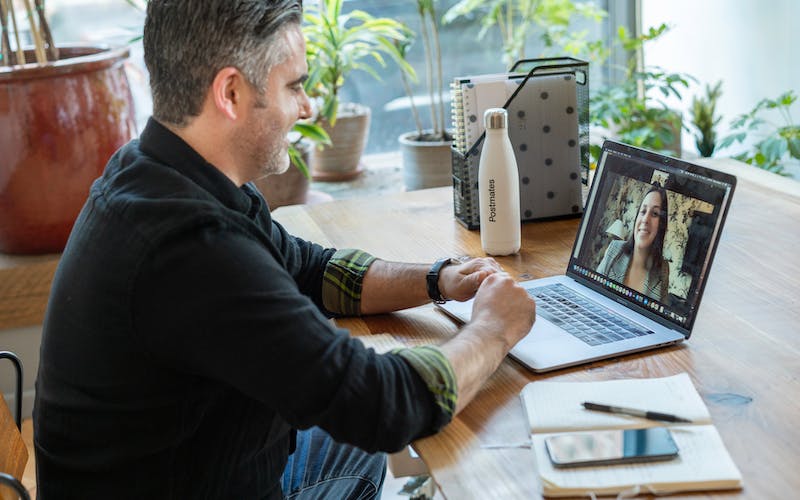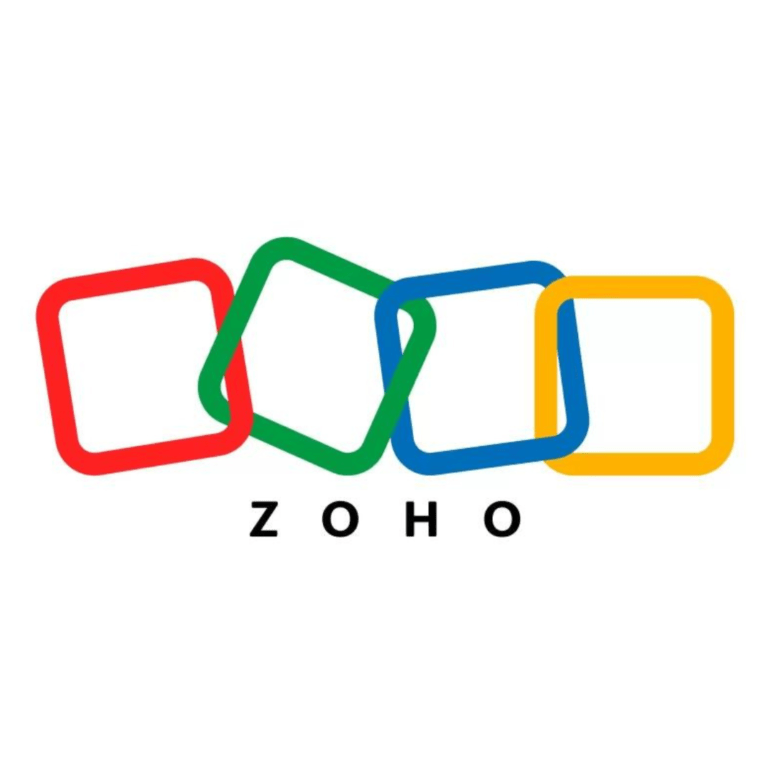
TABLE OF CONTENT
INTRODUCTION
Job Interview: After over a decade of working for myself, I recently decided to re-enter the corporate job market. The thought of jumping back into this world has been both a daunting and an exhilarating prospect.
The landscape of job interviews has evolved significantly, with new technologies, methodologies, and cultural shifts shaping the way companies hire. However, I have found the essence of making a connection, showcasing your skills, and demonstrating your alignment with the company’s values remains unchanged. Let me navigate you through what I believe the landscape looks like for your first job interview in over 10 years. I’ll offer insights, strategies, and practical tips to not only face the interview with confidence but to stand out as the ideal candidate.
UNDERSTANDING THE MODERN JOB INTERVIEW LANDSCAPE
The job interview process has undergone significant changes in the last decade, influenced by technological advancements, the rise of remote work, and shifting cultural norms. Understanding these changes is crucial for anyone stepping back into the job market after years away. Here’s what you need to know:
Technological Integration
- Digital Platforms: Interviews may now be conducted via video conferencing tools like Zoom, Skype, or Google Meet. Familiarizing yourself with these platforms and ensuring you have a stable internet connection and a quiet, well-lit space for the interview is essential.
- Applicant Tracking Systems (ATS): Many companies use ATS to screen resumes before they ever reach a human. Tailoring your resume with keywords from the job description can help ensure your application gets noticed.
Cultural Shifts
- Emphasis on Soft Skills: There’s a growing recognition of the importance of soft skills such as communication, adaptability, and teamwork. Be prepared to discuss examples of how you’ve demonstrated these skills in the past.
- Diversity and Inclusion: Companies are increasingly valuing diversity and cultural fit. Be ready to engage in conversations about how you work with diverse teams and contribute to an inclusive environment.
Interview Formats
- Behavioural Interviews: These are designed to assess your suitability for a position based on how you’ve handled past situations. The STAR method (Situation, Task, Action, Result) is a useful framework for answering these questions.
- Case Studies and Technical Tests: Especially in fields like technology, finance, and consulting, be prepared for case studies or technical tests to assess your problem-solving abilities.
Remote Work Considerations
- Remote Work Skills: With the rise of remote work, discussing your ability to work independently, manage time effectively, and communicate via digital tools is increasingly important.
- Work-Life Balance: Questions about managing work-life balance and remote work challenges may also come up, reflecting the shift towards more flexible working arrangements.
Key Takeaways
- Adapt to Technology: Ensure you’re comfortable with digital interview platforms and understand how ATS may affect your application.
- Highlight Soft Skills: Prepare examples that showcase your soft skills and ability to work in a team.
- Prepare for Different Interview Types: Familiarize yourself with behavioural questions, case studies, and any relevant technical tests.
- Understand Remote Work Dynamics: Be ready to discuss your remote work capabilities and strategies for maintaining productivity and work-life balance.
By understanding these modern interview landscapes, you can better prepare and present yourself as a well-rounded, adaptable candidate ready to tackle the challenges of today’s job market.
EMBRACING YOUR EXPERIENCE WITH CONFIDENCE
After a significant break from the workforce, I felt apprehensive about how my experience aligned with current market demands, but don’t fret, this is natural. With your years of experience, you bring a wealth of knowledge, skills, and perspectives that can be incredibly valuable to potential employers. Here’s how to embrace and leverage your experience with confidence during your interview:
Highlighting Your Unique Value Proposition
- Broad Perspective: Emphasize the broad perspective you bring to the table, including your ability to see the big picture and navigate complex challenges with wisdom and patience.
- Adaptability: Showcase examples of how you’ve adapted to change in the past, demonstrating your resilience and flexibility—key traits in today’s fast-paced work environment.
- Leadership and Mentorship: Your experience positions you as a potential leader and mentor within the organization. Highlight instances where you’ve led teams, mentored colleagues, or facilitated knowledge sharing.

Bridging the Gap
- Continuous Learning: Discuss any recent courses, certifications, or self-directed learning you’ve undertaken to stay current in your field. This shows your commitment to continuous improvement and your proactive approach to professional development.
- Technology Proficiency: If you’ve kept up with technological advancements relevant to your field, make sure to mention this. Being tech-savvy can significantly bridge the perceived gap between you and younger candidates.
Addressing Employment Gaps
- Positive Spin: Frame any employment gaps positively, focusing on the skills and knowledge you gained during this time. Whether it was through volunteer work, freelance projects, or personal development, these experiences contribute to your professional profile.
- Relevance to the Role: Connect your diverse experiences to the job you’re applying for. Explain how these experiences have equipped you with a unique skill set and perspective that can benefit the company.
Key Takeaways
- Value of Experience: Your experience is a testament to your reliability, depth of knowledge, and ability to navigate workplace dynamics.
- Continuous Learning: Demonstrating your commitment to learning and staying updated with industry trends is crucial.
- Technological Adaptability: Showcasing your comfort with technology will help dispel any stereotypes about older workers’ tech abilities.
- Positive Framing: Approach employment gaps as periods of growth and learning, highlighting how they’ve prepared you for this next step in your career.
Practical Tips
- Prepare Your Stories: Have a few go-to anecdotes ready that demonstrate your skills, adaptability, and achievements. Use the STAR method to structure your responses clearly and effectively.
- Customize Your Resume: Tailor your resume to highlight experiences most relevant to the job you’re applying for, using keywords from the job description to get past ATS filters.
- Practice Your Pitch: Practice articulating your value proposition succinctly, focusing on how your experience makes you uniquely suited for the position.
SHOWCASING YOUR VALUES AND CHARACTER
In the modern job market, employers are not just looking for skills and experience; they’re also seeking candidates who align with their company’s values and culture. This section of your interview is your opportunity to demonstrate that you’re not only a fit skill-wise but also in terms of character and values. Here’s how to effectively showcase your values and character during your job interview:
Understanding Company Values
- Research: Before the interview, spend time researching the company’s mission, values, and culture. Look for news articles, social media posts, and any available company literature.
- Alignment: Identify points of alignment between your personal values and the company’s. Be ready to discuss these alignments in detail, providing examples from your past work or personal experiences.
Demonstrating Character Qualities
- Integrity and Honesty: Be truthful about your experiences, strengths, and areas for improvement. Authenticity resonates with interviewers and builds trust.
- Resilience: Share stories that highlight your resilience in the face of challenges. Discuss how you’ve overcome obstacles, adapted to change, and learned from failures.
- Empathy and Teamwork: Provide examples of how you’ve worked effectively within a team, resolved conflicts, or contributed to a positive work environment.
Communicating Your Values
- Stories Over Statements: Instead of merely stating your values, share stories that illustrate them in action. This narrative approach is more engaging and memorable.
- Specific Examples: Use specific examples to demonstrate how your values have influenced your work decisions, leadership style, or problem-solving approaches.
Key Takeaways
- Preparation is Key: Thorough research on the company’s values and culture will enable you to tailor your responses and demonstrate alignment.
- Authenticity Matters: Genuine stories that reflect your character and values are more impactful than rehearsed answers.
- Values in Action: Focus on how your values have been reflected in your actions and decisions throughout your career.
Practical Tips
- Reflect on Your Values: Spend some time reflecting on your core values and how they’ve guided your career choices and work style.
- Prepare Relevant Stories: Identify stories from your career that best illustrate your values in action. Practice telling these stories concisely and compellingly.
- Ask Value-Oriented Questions: Show your interest in the company’s culture by asking questions about how they live out their values, handle ethical dilemmas, or support employee growth.
NAVIGATING AGEISM WITH DIGNITY
Some people say that, despite my age, I look young and have a lot of energy. However, this vitality doesn’t necessarily come across on a resume. Ageism in the job market can be a subtle but significant barrier for candidates re-entering the workforce after a long hiatus. However, with the right approach, you can navigate these challenges with dignity and turn potential biases into opportunities to showcase your value. Here’s how to address ageism proactively in your job interview:

Acknowledge the Elephant in the Room
- Proactive Discussion: If you sense hesitations regarding your age, address them head-on. Share how your experience is an asset, bringing depth of knowledge, stability, and a broad perspective that enhances team dynamics and decision-making.
- Highlight Adaptability: Emphasize your ability to adapt to new technologies, methodologies, and workplace cultures. Provide examples of recent learning or certifications that demonstrate your commitment to staying current.
Leverage Your Experience as a Strength
- Mentorship and Leadership: Discuss how your experience positions you as a natural mentor and leader within the team, capable of guiding younger colleagues through complex situations with wisdom and patience.
- Problem-Solving Skills: Use examples from your career to illustrate your problem-solving skills, showing how your experience has equipped you with unique insights and strategies that can benefit the company.
Demonstrate Technological Savvy
- Tech Proficiency: Make it clear that you are comfortable with current technologies relevant to your field. Mention any recent projects or roles where you’ve successfully used modern tools or platforms.
- Continuous Learning: Highlight your ongoing commitment to learning, whether through formal education, online courses, or self-study, especially in areas related to technology and industry trends.
Show Enthusiasm for Collaboration
- Team Dynamics: Express your enthusiasm for working in diverse teams, including collaborating with younger colleagues. Share examples of successful cross-generational teamwork and how you’ve contributed to a harmonious and productive work environment.
- Cultural Fit: Demonstrate your understanding and appreciation of the company culture, including any modern work practices like remote work, agile methodologies, or open communication channels.
Key Takeaways
- Address Age Directly: Turning potential age-related concerns into discussions about your strengths can shift perceptions and highlight your value.
- Showcase Adaptability and Tech Savvy: Demonstrating your ability to learn and adapt, especially in technology, counter stereotypes about older workers.
- Emphasize Collaboration: Sharing experiences of working effectively with people of all ages reinforces your fit within diverse teams.
Practical Tips
- Update Your Digital Presence: Ensure your LinkedIn profile and other professional online profiles reflect your current skills and experiences, including any recent learning or projects.
- Practice Your Responses: Prepare for possible questions or concerns about age by crafting responses that highlight your strengths, adaptability, and how you’ve kept your skills up to date.
- Seek Feedback: Before your interview, seek feedback from peers or mentors on your interview approach, especially on how you address age-related questions.
THE INTERVIEW IS A TWO-WAY CONVERSATION
Viewing the job interview as a two-way conversation rather than a one-sided interrogation can significantly change the dynamics in your favour. This approach not only helps alleviate some of the stress associated with interviews but also positions you as a proactive and engaged candidate. Here’s how to effectively engage in this dialogue:
Ask Meaningful Questions
- Company Culture: Inquire about the company culture, values, and what makes it a unique place to work. This shows your interest in fitting into the organization beyond just the role.
- Team Dynamics: Ask about the team you’ll be working with, their working style, and how they collaborate. Understanding team dynamics can give you insight into how you would fit in.
- Growth Opportunities: Questions about professional development and growth opportunities within the company demonstrate your ambition and commitment to contributing long-term.
Show Engagement and Interest
- Active Listening: Pay close attention to the interviewer’s words, showing engagement through body language and thoughtful responses.
- Follow-Up Questions: Demonstrate your interest and engagement by asking follow-up questions based on the interviewer’s answers.
Share Your Vision
- Contribution: Discuss how you envision contributing to the team and the company. Highlight specific skills or experiences that you believe will be beneficial.
- Alignment: Express how your career goals and values align with the company’s direction. This helps the interviewer see you as a long-term fit.
Key Takeaways
- Preparation is Crucial: Coming to the interview well-prepared with information about the company and thoughtful questions shows your seriousness about the role.
- Engagement Shows Interest: Engaging actively in the conversation demonstrates your interest in the position and the company.
- Mutual Fit: The two-way conversation approach helps both you and the interviewer assess the mutual fit, making the interview process more effective.
Practical Tips
- Prepare a List of Questions: Have a list of questions ready, but be flexible. Let the conversation flow naturally, and use your questions as a guide rather than a script.
- Practice Active Listening: Work on your listening skills to ensure you can engage effectively in the conversation. This includes nodding, maintaining eye contact, and paraphrasing to show understanding.
- Reflect on Your Career Goals: Be clear about your career goals and how they align with the opportunity at hand. This clarity will help you articulate your vision and how you see yourself contributing to the company.
THE IMPORTANCE OF TRANSPARENCY
Transparency during the job interview process is crucial for establishing trust and demonstrating your integrity. Being open about your experiences, strengths, weaknesses, and career aspirations helps create a genuine connection with the interviewer and lays the foundation for a successful working relationship. Here’s how to approach transparency in your interview:
Be Honest About Your Experience
- Accurate Representation: Ensure your resume accurately reflects your work history, skills, and accomplishments. Misrepresentations can lead to challenges down the line.
- Discuss Gaps: If there are gaps in your employment, be prepared to discuss them openly. Explain what you learned during these periods and how they have prepared you for your next role.
Acknowledge Areas for Growth
- Self-Awareness: Demonstrating self-awareness by acknowledging areas where you’re looking to grow shows maturity and a commitment to professional development.
- Constructive Approach: Frame these discussions positively, focusing on how you’re actively working to improve these areas or how you’ve overcome similar challenges in the past.
Share Your Career Goals
- Long-Term Vision: Discuss your long-term career aspirations and how the position aligns with your goals. This helps the interviewer understand your motivation and potential longevity with the company.
- Alignment with Company Goals: Highlight how your career goals align with the company’s direction and values. This demonstrates your interest in contributing to the company’s success beyond the immediate role.
Express Your Enthusiasm
- Genuine Interest: Convey genuine enthusiasm for the role and the company. Share what specifically attracts you to the opportunity and how you see yourself making a positive impact.
- Cultural Fit: Discuss how you resonate with the company culture and values, and why you believe you would be a good fit. This shows that you’re not just looking for any job, but the right job.
Key Takeaways
- Honesty Builds Trust: Being honest about your experience and aspirations establishes trust and credibility with the interviewer.
- Openness Shows Character: Transparency about your strengths and areas for improvement demonstrates character and a willingness to learn and grow.
- Alignment Ensures Mutual Fit: Sharing your career goals and how they align with the company ensures that both parties are on the same page regarding expectations and growth potential.
Practical Tips
- Reflect Before the Interview: Spend time reflecting on your career path, including successes, challenges, and lessons learned. This preparation will help you speak candidly and confidently about your journey.
- Practice Your Responses: Practice articulating your experiences, areas for growth, and career aspirations. This will help you convey your thoughts clearly and effectively during the interview.
- Ask for Feedback: If possible, seek feedback from peers or mentors on your interview approach, especially your ability to communicate transparently and authentically.
THE ART OF THE FOLLOW-UP
The period after a job interview is critical, and how you handle the follow-up can significantly impact your candidacy. A thoughtful follow-up demonstrates your continued interest in the role, reinforces your qualifications, and keeps you top of mind for the hiring manager. Here’s how to master the art of the follow-up:
Timing Your Follow-Up
- Immediate Thank-You Note: Send a thank-you email within 24 hours of your interview. This quick turnaround shows your enthusiasm and appreciation for the opportunity to interview.
- Follow-Up Email: If you haven’t heard back within the timeframe mentioned during the interview, it’s appropriate to send a polite follow-up email. This can be done one to two weeks after the interview, depending on the hiring timeline discussed.
Crafting Your Thank-You Note
- Personalize Your Message: Address the interviewer by name and reference specific conversations or moments from the interview to personalize your note.
- Reiterate Your Interest: Clearly express your continued interest in the role and the company. Briefly restate why you believe you are a good fit for the position.
- Thank Them: Show appreciation for the interviewer’s time and consideration. Gratitude goes a long way in leaving a positive impression.
Writing a Follow-Up Email
- Be Concise and Polite: Keep your follow-up email brief and to the point. Reiterate your interest in the position and inquire about the status of the hiring process.
- Offer Additional Information: If there’s any additional information you can provide, such as references or work samples, offer them in your follow-up email.
- Express Flexibility: Show understanding of the hiring process and express your willingness to provide any further information needed.
Key Takeaways
- Promptness Shows Enthusiasm: Sending a thank-you note promptly after your interview demonstrates your strong interest in the role.
- Personalization Makes an Impact: Personalizing your follow-up communications makes them more impactful and memorable.
- Politeness and Patience are Key: While it’s important to follow up, it’s equally important to do so respectfully and without pressuring the hiring team.
Practical Tips
- Prepare in Advance: Draft a template for your thank-you note before the interview so you can personalize it and send it quickly afterwards.
- Keep Records: Keep a record of when you sent your thank-you note and follow-up email to ensure you’re timing your communications appropriately.
- Stay Engaged: Continue to express your enthusiasm for the role and the company in any follow-up communications, but also remain engaged with other job opportunities until you receive a firm offer.
CONCLUSION
So, I have provided a detailed guide on how to prepare for and ace your first job interview in years. I have covered everything from understanding the current job market to mastering the art of the follow-up. These strategies are aimed at boosting your confidence and helping you secure the job you’re looking for.

Your first job interview after a decade can be a journey filled with anticipation and growth. This comprehensive guide aims to equip you with the insights, strategies, and confidence needed to navigate this milestone successfully.
Remember, each interview is an opportunity to learn and refine your approach. Whether you’re returning to a familiar field or venturing into new territory, your unique blend of experience, skills, and perspective is invaluable. The key is to communicate this effectively, demonstrating not only your ability to fulfil the role’s requirements but also your alignment with the company’s culture and values. Wishing you all the best!

